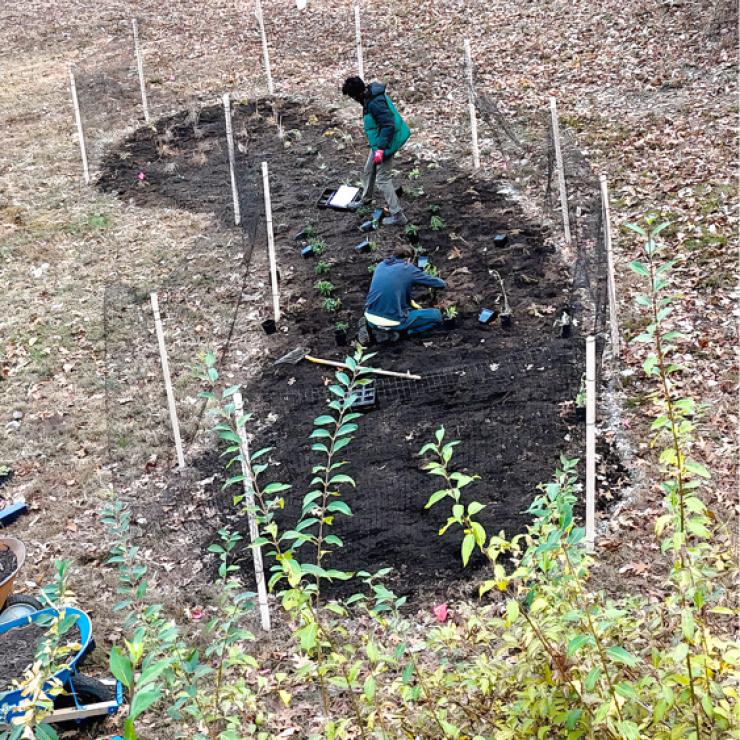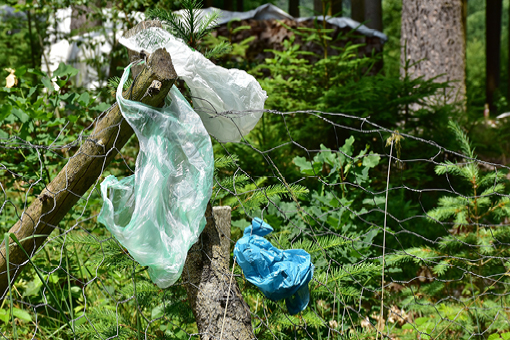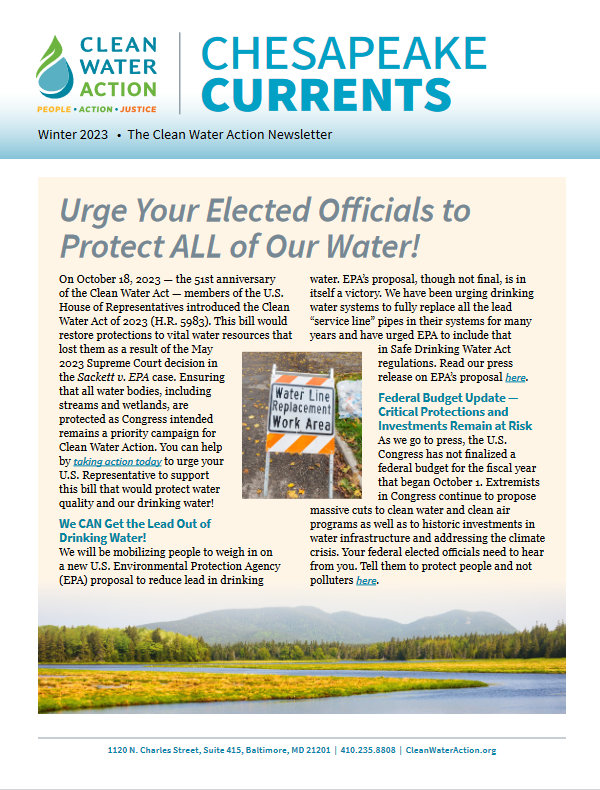In this Issue:
- Victories and Progress in 2023
- Maryland Climate Action Plan
- Fees and Fairness
- District of Columbia Green Infrastructure in Your Neighborhood
- Big Win for the Anacostia River
- Virginia Voting Victory
- National News: Urge Your Elected Officials To Protect ALL of Our Water!
Victories and Progress in 2023
As 2023 comes to a close, we reflect on victories and progress made throughout the year. In house, we
celebrated Emily Ranson, our Maryland director, who accepted a new role as the Chesapeake regional
director. Additionally, Gabrielle Sanchez joined our team as Maryland organizer and Nathan Peebles as our DC Coordinator. Amid these changes, our region saw substantial advancement towards a sustainable waste future — with more opportunities for organic recycling. In Maryland, DC, and Virginia we have witnessed local governments make investments to offer curbside food waste collection and expand composting. We are jazzed about our projects in Maryland and DC focused on green stormwater infrastructure — using plants to capture and filter more stormwater. In Maryland, this has been piloting native landscaping on septic system drain fields, while in DC we worked with DC government and the Anacostia Parks and Community Collaborative (APPAC), to educate residents about available programs. Throughout all of this, we are excited to continue working with Clean Water Action members for a healthier, more vibrant Chesapeake Bay that connects the people to the water systems that sustain us.

Native Gardens on Septic Fields: With the Chesapeake Bay Trust and Howard County government, Clean Water Fund installed two native gardens on septic fields in Howard County. Thanks to our partners at the University of Maryland and Howard EcoWorks PHOTO COURTESY WILLIAM BECK
Maryland Climate Action Plan
As required by the Climate Solutions Now Act of 2021, this summer Maryland published a draft climate action plan outlining a policy pathway for Maryland to reduce emissions by 60% by 2031 and achieve net-zero emissions by 2045. While the draft has a lot of good ideas, we were concerned about how it did not have many specifics, especially not about waste management.
How we deal with our trash has major impacts on the climate. Methane from landfills is the third highest source of industrial methane emissions, and methane is a potent greenhouse gas that is 80 times more powerful than carbon dioxide on a 20-year timeframe. Most Maryland counties primarily use landfills, but three — Baltimore City, Baltimore County, and Montgomery County — use trash incinerators, which are even worse. Trash incinerators emit more greenhouse gases than any other source of electricity per amount of electricity produced. A good climate plan needs to address landfill emissions in a serious way, and completely rule out trash incineration. But the draft Climate Pathway Report didn’t include policy recommendations to reduce emissions in the solid waste sector and assumed that Maryland’s trash incinerators will continue business as usual through 2045.
We submitted comments to the state asking them to outline a plan for waste management that would reduce greenhouse gas emissions by diverting food and organic waste out of our waste stream and sending it to compost. Composting reduces greenhouse gas emissions and improves the ability of soil to sequester (or absorb) more carbon. Compost can also be substituted for conventional synthetic fertilizers, which require a lot of energy to produce. We also asked the state to consider the myriad of co-benefits by encouraging more composting in the state — local compost production reduces the transportation costs (both financial and in terms of emissions). Farmers able to create compost onsite can diversify their income streams while creating compost that they can use instead of trucked-in fertilizer. There are significant climate benefits in both producing and using compost.
Our comments also demanded that the final Climate Pathway Report include an end to trash incineration — a move that the report’s own modeling shows would reduce greenhouse gas emissions significantly. Communities near Maryland’s incinerators have been working for years to shut them down, and while there’s still lots of work ahead, elected leaders have promised these incinerators will close long before 2050. We know that we cannot burn our way to a healthier climate.
Through the comment period, we organized public comments at MDE’s listening sessions, held a webinar with nearly 100 people, and recruited 18 other organizations to sign onto joint comments demanding that the report eliminate trash incineration, biogas, and biomass from Maryland’s climate action future. Now, we’re waiting for MDE to release the final report, and we’ll keep working for Zero Waste and against polluters like trash incineration.
Fees and Fairness: When we craft Zero Waste solutions, it’s critical that impacted communities help shape those solutions. This year, we’ve been working hard with Maryland Hunger Solutions, the Prince George’s Food Equity Council, Centro de Apoyo Familiar, and many more food equity organizations to ensure that when communities in Maryland mandate a fee on carryout bags, that fee won’t apply to SNAP or WIC transactions — because SNAP and WIC can’t be used to pay a bag fee. To learn more, check out our testimony to the Prince George’s County Council and coverage in the Washington Informer.
Fees and Fairness

When we craft Zero Waste solutions, it’s critical that impacted communities help shape those solutions. This year, we’ve been working hard with Maryland Hunger Solutions, the Prince George’s Food Equity Council, Centro de Apoyo Familiar, and many more food equity organizations to ensure that when communities in Maryland mandate a fee on carryout bags, that fee won’t apply to SNAP or WIC transactions — because SNAP and WIC can’t be used to pay a bag fee. To learn more, check out our testimony to the Prince George’s County Council and coverage in the Washington Informer.
District of Columbia Green Infrastructure in Your Neighborhood

Green infrastructure at Work: This bioretention in DC’s Ward 7 helps collect and clean stormwater locally. Green infrastructure such as this can be incorporated into our communities, providing environmental, social, and financial benefits. PHOTO COURTESY DC DOEE
You may have heard the term “green infrastructure” before, but if someone asked you to define or describe it, you may not know how to answer them. That’s why Clean Water Fund partnered with the DC Department of Energy and Environment (DOEE) and Anacostia Parks and Community Collaborative (APACC) — to help increase community awareness of green infrastructure, available programs in the District, and to engage in a community visioning process for future green infrastructure projects.
In a nutshell, green infrastructure is a natural solution to stormwater problems. It's a sustainable way to help prevent pollution from entering our waterways, such as the Anacostia and Potomac Rivers. One way the District has sought to combat this pollution is by unveiling several green infrastructure incentive programs that DC residents can take advantage of. One such program is the Stormwater Retention Credit (SRC) Trading Program, which enables DC property owners to generate income by incorporating green infrastructure practices, such as rain gardens and rain barrels, on their property. The SRC Program also partners organizations, such as houses of worship and small businesses, with SRC aggregators that can install and maintain green infrastructure practices at no charge to landowner.
Through a series of four presentations, we met with residents in DC’s Wards 7 & 8 at community gatherings, listening to locals’ priorities, concerns, and visions for green infrastructure throughout the Anacostia River Corridor. Many fruitful conversations were had, and dozens of survey responses were collected, priming us to report our findings back to DOEE. Not only did this project give a voice to communities that are often left out of the planning process, but it also contributed to a greater environmental impact, ensuring that our communities steward local waterways and green spaces.
Big Win for the Anacostia River

DC Attorney General, Brian Schwalb, announces historic settlement with Pepco. APACC’s Coordinator, Brenda Richardson (left), stands in support with other APACC members.
PHOTO COURTESY WUSA9
The Anacostia Park and Community Collaborative (APACC) continues to garner coalition support in the fight for a cleaner Anacostia River. On October 3, DC’s Attorney General Brian Schwalb announced that Pepco, one of the region’s largest utility companies, will pay over $57 million for its role in discharging toxic chemicals into the Anacostia River. Pepco must pay $47 million towards cleanup efforts of the Anacostia River, $10 million in civil penalties, and clean up its contaminated DC facilities at Buzzard Point and Benning Road. This is the largest environmental settlement in DC history.
Not only is this a huge win for the District’s environment, but also for underserved communities east of the Anacostia River. Ward 7 & 8 residents have shouldered the burden of toxic dumping in the Anacostia River for decades, suffering from disparate health effects and economic turmoil in part due to corporate maleficence from actors such as Pepco. With 50+ APACC member-organizations advocating for parks and communities along the Anacostia River Corridor, we firmly believe that polluters will continue to be held accountable, and that local residents will once again reap the benefits of a vibrant Anacostia River ecosystem.
Virginia Voting Victory
This year in Virginia voters turned out to determine the control of the House and Senate. Like Maryland and the federal government, Virginia has two legislative chambers that must jointly approve of legislation sent to the governor’s desk. Unlike Maryland and the federal government, the governor in Virginia cannot run for consecutive terms in office.
Urge Your Elected Officials to Protect ALL of Our Water!
The Clean Water Act of 2023
On October 18, 2023 — the 51st anniversary of the Clean Water Act — members of the U.S. House of Representatives introduced the Clean Water Act of 2023 (H.R. 5983). This bill would restore protections to vital water resources that lost them as a result of the May 2023 Supreme Court decision in the Sackett v. EPA case. Ensuring that all water bodies, including streams and wetlands, are protected as Congress intended remains a priority campaign for Clean Water Action. You can help by urging your U.S. Representative to support this bill that would protect water quality and our drinking water! Take Action: cleanwater.org/CWA23.
We CAN Get the Lead Out of Drinking Water!
We will be mobilizing people to weigh in on a new U.S. Environmental Protection Agency (EPA) proposal to reduce lead in drinking water. EPA’s proposal, though not final, is in itself a victory. We have been urging drinking water systems to fully replace all the lead “service line” pipes in their systems for many years and have urged EPA to include that in Safe Drinking Water Act regulations. Read our press release on EPA’s proposal at cleanwater.org/lead-drinking-water.
Federal Budget Update:
Critical Protections and Investments Remain at Risk
As we go to press, the U.S. Congress has not finalized a federal budget for the fiscal year that began October 1. Extremists in Congress continue to propose massive cuts to clean water and clean air programs as well as to historic investments in water infrastructure and addressing the climate crisis. Your federal elected officials need to hear from you. Tell them to protect people and not polluters at cleanwater.org/budget.
Thank you for supporting our year-end campaigns, and our ongoing work to restore and protect our communities.
cleanwater.org/MDyearend
cleanwater.org/yearend
CURRENTS is published by Clean Water Action and Clean Water Fund. Reproduction in whole or part is permitted with proper credit. © 2023 All rights reserved.
